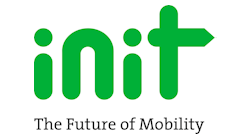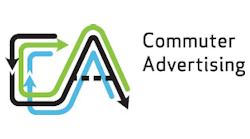Urbana, Ill.
Champaign-Urbana Mass Transit District (MTD)
Amy Snyder
Communications Specialist
A fundamental success of the Champaign-Urbana Mass Transit District’s entrée into social media is providing a stage for our riders to voice their praises, help clarify information in our publications and technologies, and counter the naysayers.
Although MTD is proud to say we have several advocates regularly contributing positive content on our social networks, one stands above the rest in frequency and depth. I’m fairly confident he would eagerly agree to the use of his full name, as well as his user name, in this article. But I will just call him “John.”
John has a Twitter account dedicated to MTD and his daily rides. He documents bus numbers, details how route transfers went, and shares stories and images of everything in between. At first blush, I wanted to write John off as a bus loon.
But John is a savvy rider who understands our routes and schedules as well as some of our own staff. He rides multiple routes daily and has an awareness of all passenger tools. A professor at a local community college, John is also a competent technology and Web user.
Take one example from the end of November 2011. John brought attention to an issue with several interior destination signs that display upcoming intersections. An ADA requirement, the LED screens required quick attention because they were not outputting any information.
John: “@CUMTD Every MTD bus I’ve been on today has had audio working but the interior sign off. 1182, 9663, and now 0327. Seems like software.”
I reported this issue to the appropriate personnel and thanked John. As technicians worked to find the affected buses and diagnose the issue, John continued to send me bus numbers of affected vehicles throughout the week. It culminated in a page he added to his website that detailed the affected buses with dates and routes. Very helpful, John.
John also frequents MTD’s Facebook page. He affixes comments to many of my posts providing readers with additional tips and reminders. When I shared excitement over the near completion of focus groups MTD hosted on the University of Illinois campus, one rider jeered, “Maybe you should conduct a survey of the people who live here and ride the buses all year long!” John jumped to our defense, naming the two community focus groups he had participated in and noted the specific feedback he had witnessed go into effect.
When I posted details of service reductions for the University of Illinois winter break, John added, “Also no Saturday evening service on 24 and 31 December, and no Sunday day service on 25 December and 1 January.” Good call, John.
We allow Facebook users who have “liked” our page to create posts of their own. As comes with the territory, people have published criticisms. Related to service reductions we impose during University breaks, one user accused MTD of treating the local community as though “it didn’t exist” when the students left town. John listed all (literally, all) services unaffected by service reductions. It was a terrific compliment to the defense I posted. Thanks, John.
The on-the-street reporting and compliments are not blind admiration. John is sometimes critical of our services and is vocal about pockets where improvement could occur. A route we created this year was largely the inspiration of John’s passionate defense of a particular Saturday service.
Providing riders like John a community space where they can share their experiences and opinions is vital to improving customer service, adding to the appeal of public transit, and ultimately, growing as an agency.
Cincinnati, Ohio
Cincinnati Metro/Southwest Ohio Regional Transit Authority (SORTA)
Jill E. Dunne
Public Affairs Manager
Cincinnati Metro: Growing Fans with Social Media
For the last two years, Cincinnati Metro has focused on increasing fans and followers on Facebook and Twitter, as well as improving the quality of its customer interaction on these social media tools. The efforts have paid off for Metro, with the number of Facebook fans growing from 43 to nearly 1,000 and Twitter followers increasing from 1,500 to more than 3,000.
Although originally used as a way to provide detour and route information, Cincinnati Metro changed its focus and added noteworthy news and relevant local information in its tweets and posts. Metro also posts videos, like how to use new fareboxes, as well as photos of events, like ribbon cuttings at transit centers or new bus unveilings.
In addition to engaging followers with a mix of posts, it began to treat social media as an additional customer service communications tool. Cincinnati Metro responds to customer questions and complaints and works with the customer service department to resolve issues whenever possible. For example, when a customer tweeted about an umbrella forgotten on a bus, a strategic communications department employee worked with an operations employee to reunite the customer with her umbrella on the same day.
Facebook and Twitter are also very useful when winter weather strikes, sometimes causing delays and detours to normal routes. Through an automated system, updates provided by Cincinnati Metro’s Radio Control Center are provided directly to the Twitter feed. Riders are encouraged to check Facebook and Twitter during inclement weather because they can be updated faster than Cincinnati Metro’s website.
Facebook Successes
To help support an advertising campaign highlighting the tagline, “People you know… go*Metro,” each advertisement was posted on Cincinnati Metro’s Facebook page. One of the advertisements received 24 “likes,” two shares and seven positive comments. A local blog,Family Friendly Cincinnati posted that they love the ads — feedback that the marketing department can use when it evaluates the campaign’s effectiveness.
In addition, other posts provide Cincinnati Metro with anecdotal feedback on services and programs. For example, one Metro fan posted about her happiness with Cincinnati Metro’s program with a local university. She said, “I save $500 per school year on just the parking — and that $500 is before gas, car repair, etc.”
Twitter Wins
Cincinnati Metro’s Twitter account receives positive and negative feedback from its riders regularly. Reporters have reached out to Cincinnati Metro on its Twitter account and news outlets have retweeted information posted on Cincinnati Metro’s Twitter account.
For tech-savvy riders, using Twitter can be more convenient than making a phone call or sending an email. When there is a complaint, Cincinnati Metro works closely with the customer service department and operations to verify and examine the situation and provide a response to the customer. Its unique and effective approach on Twitter was featured in an article on Cincinnati’s online publication, Soapbox, and was profiled as a case study by a Cincinnati-area social media expert on Examiner.com.
Cincinnati Metro Twitter follower @RubySmilesKnits, who often tweets about her experiences with the bus service, said, "I love being able to use Twitter to communicate with Metro."
Future Plans
Cincinnati Metro is planning to continue its social media efforts and will focus more on social media measurement in the future. Using Facebook’s insights tools and looking into available analytics for Twitter will help ensure that these social media efforts are getting the maximum impact. Whether sharing news or responding to customer concerns, Facebook and Twitter are two tools that are helping Cincinnati Metro better engage with its riders.
Dayton, Ohio
Commuter Advertising
Katie Eiser
Senior Marketing Coordinator
As the senior marketing coordinator at Commuter Advertising, I have the pleasure of running our social media outlets. Commuter Advertising is a transit media company that creates, manages and sells time- and location-based audio sponsorship messages on trains and buses in partnership with public transit agencies. I am responsible for updating the company’s social media outlets on a daily basis. I have learned a tremendous amount from my experience in running various outlets such as: Facebook, Twitter, YouTube and LinkedIn. I tend to focus most attention on Facebook and Twitter. The key is to always engage your audience and direct the majority of tweets or posts toward them — whether that means asking a question or posting/tweeting something engaging and interesting. We want to create conversation and buzz about our company — which is the goal of social media.
A social media success story Commuter Advertising would like to share centers around trending topics on Twitter. Every day, I review the trending topics and see if I can connect a trending topic to public transit. If so, I create a tweet that includes the trending topic so it will show up in the results list. This is the easiest way to give our tweets the most exposure possible because this links us to the listed trending topics that our followers and those who do not follow us can see. For example, On December 21, 2011 @commuterads tweeted, “Happy 1st Day of Winter Commuters.”
“Happy 1st Day of Winter” was a trending topic and the company received five tweets in reply rather quickly. This opened the door for more conversation. In addition, if a trending topic is tweeted, people who do not follow our company on Twitter can view our tweet if they look at the results lists for a trending topic!
Paying attention to your @mentions is another focus point for success. In October of last year, Commuter Advertising sent out creative awards to our clients who we found to have excellent and successful campaigns using one of our many forms of media. After the awards were released, @commuterads received a tweet from a client thanking our team for going “above and beyond” in sending out our creative awards. I thanked the client for the tweet and retweeted what she had posted about our team. This was the ultimate success story because our client posted a fantastic compliment about our company that all of her followers were able to view — creating great buzz about Commuter Advertising via social media.
Dallas, Texas
DRI Corp.
Veronica Barranco Marks
Vice President, Corporate Communications and Administration & Assistant Secretary
Tweet, Tweet for Transit
In early February 2011, the American Public Transportation Association (APTA) Business Member Board of Governors (BMBG) asked private sector members to write letters to Congress regarding the value of making long-term capital investments in U.S. public transportation. Several of my DRI Corp. colleagues and I participated in the campaign, sending letters and email messages to elected officials in Texas and North Carolina. Seeing as I was also planning to visit Capitol Hill with classmates from the Leadership APTA Class of 2011, I wondered how we as individuals might lend additional assistance to the BMBG’s Congressional effort via social media.
In February 2011 I opened a personal Twitter account. With my CEO’s support, I set about establishing a presence and enlightening fiscal conservatives on the tangible and intangible benefits stemming from federal investments in U.S. public transportation — while touting the importance of America’s continued access to affordable and accessible mobility options. As @vbmarks1, I became A Conservative Cheerleader for Public Transportation.
To date, I’ve targeted approximately 2,000 Republicans, key conservative political groups, religious organizations, corporations, media, etc. — sometimes calling them out in my mobility-, transit-, and clean energy-related messages. Although a “follow” doesn’t necessarily imply endorsement, some of my “followers” presently include various politicians and conservative political groups, Lions Clubs International, American Association of Retired Persons, Feed the Children, CFO America, Salvation Army, Catholic Relief, Easter Seals, American Cancer Society, Cancer Treatment Centers of America, media outlets like "The Veterans Journal," "The Hill" and C-SPAN Radio, U.S. National Guard, colleges and universities, organizations supporting the arts, and more.
I’ve only recently achieved 400 followers, so I wouldn’t call my Twitter efforts an overwhelming success by any means. Initially, I protected my page from the general public in a futile attempt to prevent seemingly distasteful and/or disreputable “Twitterers” from “following” me. I do regret the lock down, as I believe it impeded my ability to attract more followers early on. (If you choose to open a Twitter account, avoid hiding behind your privacy settings like I did — especially if you’re making positive statements about the U.S. public transportation industry.) Since unlocking my profile, I have been “retweeted,” “favorited” and added to a couple of lists, which only makes me want to continue “cheering” (in 140 characters or less) that Public Transportation Means Business. And with more than 900 “cheers” posted thus far, it’s a passionate start! Go transit!
Chesapeake, Va.
INIT, Innovations in Transportation Inc.
Ann Derby
Marketing & Events Manager
Recently I read an article entitled 26 Promising Social Media Stats for Small Businesses. Based on research from Zoomerang, an online survey and poll service, the top three reasons businesses leverage social media are to connect with customers, enhance visibility and promote themselves.
For INIT, understanding and connecting with our customers is priority No. 1. Establishing our presence on Facebook, Twitter and YouTube has provided us with better tools to make that happen. However, as we have stepped into the social media arena, we have also recognized a shift in how we accomplish our goals. Instead of expecting our customers to seek out our products and services, we have found three ways to help us connect while bringing something of value to our customers.
1. Education about new technology and industry events.
As a business, the information we offer is different from that of a transit agency, but ultimately we connect with our customers in the same way — by giving them information they need in a usable format. For instance, recently we wanted to educate our followers about INIT’s new electronic fare collection products. To do this, we created 2-D bar codes (QR or Quick Response codes) that we embedded with personal v-Cards and sent to every attendee of the APTA Annual Meeting & Expo. We posted links on our Facebook page that led folks to a page on our website explaining how to use the personal codes to win an Apple iPad. At the show, the personal codes were scanned at our electronic fare card reader which printed out the holder’s contact information. The information was placed in the drawing, while a second ticket printed out the time and place that the drawing would be held. Using Facebook helped us roll out a very successful campaign and educate our customers about our latest technology, while advertising an important industry event.
2. Promotion of our customer’s accomplishments.
Building long-term relationships with our customers is something we work hard to accomplish at INIT. What better way to do that than to follow them on Facebook and Twitter and share the great things they are doing? For instance, INIT customer Hampton Roads Transit (HRT) was experiencing record-breaking ridership numbers onboard its new light rail system, The Tide. Normal ridership tallies had already been running above projected figures at an average of 4,800 daily. However, the weekend of the Grand Illumination Christmas parade in downtown Norfolk, ridership reached an outstanding 12,000. The numbers not only confirmed the success of the light rail system, but also gave INIT an opportunity to publicize its automatic passenger counting (APC) technology employed by HRT on board the light rail vehicles. In this way, we promoted our customers’ successes and also let our followers know the benefits of using our technology.
3. Fostering camaraderie among staff and customers.
The most interesting aspect of our social media experience is the way we connect with our domestic and international colleagues and customers through our personal and company event postings. INIT is a global company operating in several different countries and time zones. We do not always get to interact on a personal level or to show our human side.
Through Facebook we have been able to post our community projects, in-house events, staff accomplishments and fun contests. Whether it is the Annual Chili Cook-off Competition, a Backyard BBQ or the Halloween Costume Contest, the photos and contest winners are our way of sharing our semi-private side and showing our customers that although we are a technology-focused company (essentially a bunch of geeks), we definitely know how to have fun! In this way we foster a sense of kinship and connection with our customers and colleagues while showing them we are approachable and easy to work with.
San Diego County, Calif.
North County Transit District (NCTD)
Emily Kuhnel
Marketing Representative
A Tweet in the Dark – Social Media in crisis communications
Social media wasn’t very much a part of the North County Transit District’s marketing and communications plan a year ago. Twitter had a few followers. The agency didn’t even have a Facebook page.
But surveys showed us large populations of our riders generally have smartphones and nearly all are online. We have also learned that the fans of our system want to interact — in good times and bad.
So, we built a Facebook fan page and drew fans by posting news stories and photos. We invited them to “like” us for a chance to win tickets and transit passes to a huge holiday event where parking is a pain. We asked riders to “Snap Yourself” on board and post the photos to our page to win a Nook or an iTouch. We now have a solid fan following.
We also boosted Twitter activity. Transit buffs appreciate interesting articles about new technology or government initiatives. Our daily commuters retweet service alerts about late trains or weekend ticket deals. We added hundreds of followers in six months.
But all the analytics show us clearly when social media has proven most valuable to our customers: in the midst of crisis.
The first event, which served as a good training exercise, was December 2010. Floods inundated our busiest commuter station and water wiped out parts of the tracks. We didn’t have Coaster train service for four days. People wanted to know when it would be back.
Twitter and Facebook offered those updates, and an easy way for our staff to post service updates from home through the holidays. It helped that we had already built our fan base through other promotions and steady interaction. Even if people weren’t Twitter followers, they could watch our feed directly on our homepage.
They generally didn’t express anger at the lack of service. Rather, dozens tweeted thanks for the updates.
But that was just the appetizer to the Great September Blackout of 2011. The instant meltdown left almost 7 million people in the southwestern United States and Mexico in the dark. What do people do when the power goes out in the middle of the work day? They go home. But a look out the window showed gridlock. Traffic lights were dark.
How would we let them know our rail systems are still up and running in an information void? All but one radio station broadcast dead air. People weren’t watching television. Cell phone calls dropped. Texting was dodgy. We didn’t know who had enough laptop power to receive our emailed press alerts …
So on top of our other efforts, we tweeted. Much to our surprise, Twitter followers were quickly among the most informed people in the county. They followed blackout news and shared it with their neighbors. The press and local governments picked up our tweets, retweeted and used our information in their press conferences (which, ironically, few could watch). In the first two hours, we had 100 new Twitter followers. Overnight, we added hundreds more. Thousands rode our trains and buses home that day.
The next day, we got calls from other government agencies wondering how we got word out so well.
San Diego government agencies are constantly preparing crisis plans for “the Big One” — that major earthquake that seems inevitable. We’ve realized social media has to be a major part of that plan. Is it part of yours?
Philadelphia, Pa.
Southeastern Pennsylvania Transportation Authority (SEPTA)
Andrew Busch
Press Officer
SEPTA Reaches Out to ‘Hackers’ to Further Social Media Presence
The Southeastern Pennsylvania Transportation Authority (SEPTA) recently partnered with the community it serves on a recent social media project that has yielded multiple success stories — with more expected to come.
In October 2011, SEPTA launched its Developer Network Initiative with a "Hackathon" that created a unique partnership between the local tech community and SEPTA's in-house IT talent. SEPTA data, such as schedules and on-time performance information, has been a keen point of interest in the development of apps and other online tools aimed at giving riders travel information.
Michael Zaleski, SEPTA's director of emerging and specialty technology, said, "The goal is to establish a developer community centered around our data and engage in open dialog about it."
In recent years, SEPTA has launched a host of travel- and schedule-related travel tools through its website, Twitter and Facebook. Schedule and trip planning tools are also available on Google Transit. The push to improve accessibility to this information, however, continues — both inside and outside of the transit authority.
"We realized that developers would find a way to get our data and create apps, so we decided to provide the data in an easy format and to work with the developers to meet their needs," Zaleski said. "It's a great way to make sure that the data riders get is accurate."
The Hackathon event — appropriately — "started with a Tweet," said Zaleski, who has long worked with outside developers on the shared goal of creating new tools that serve SEPTA riders.
On October 8, 2011, Zaleski and other SEPTA representatives met with dozens of private developers on their turf at Devnuts, a Web development space in Northern Liberties, a burgeoning Philadelphia neighborhood that is at the epicenter of the local tech movement.
"Our participation allowed us to respond to developers’ needs while expanding our API (application programming interface) offerings," Zaleski said. "We were very pleased by the turn out and enthusiasm, but was most impressed by the talent that participated. The community has been very supportive and the response has been nothing but positive. As these apps make their way into the general public, that positive spirit goes with them."
Zaleski said he's excited about what's been created since the Hackathon, and what's to come.
"The results have been pretty amazing," he said. "We're seeing our data integrated into dozens of creative applications."
"Although most are intended for riders, there are others that do a range of things from performing analytics to using an Xbox to interact with the data," Zaleski added. "We're planning on releasing more data, formalizing our API framework and putting together an ‘App Showcase,’ a place where developers can submit their apps and have them listed on the SEPTA website."
Working with outside developers furthers SEPTA's overall goal — through social media and other avenues — of improving communications with customers.
"These efforts increase the number of communication channels by which riders can get information," Zaleski said. "More channels means more options for riders to choose how they interact with the data."
Fort Worth, Texas
The T (Fort Worth Transportation Authority)
Richard Maxwell
Assistant Vice President of Marketing
Social Media: The T’s way to partner and engage with the Fort Worth community
Social media has fundamentally changed the way The T communicates with its audiences, offering real-time, two-way communication and new opportunities to engage customers and build brand loyalty. In addition to advertising, marketing and public relations, we now can speak directly to our customers via social media channels such as Facebook, Twitter, LinkedIn and YouTube. All businesses and organizations — including ours and the ones we partner with — benefit from social media because the “fans” and/or “followers” ultimately become “brand ambassadors.”
At The T, we recognize the importance of being able to talk directly with our fans, which, in turn, sparks further conversations and other discussions about public transportation. While many transportation agencies throughout the United States use social media to provide information about their bus and rail services, schedule changes and updates, and other “news”-related items, The T’s social media efforts are more heavily focused on our local community and the events and goodwill in and around Fort Worth and the North Central Texas region.
Most of our social media outreach is invested toward positively impacting our relationships with our community. Our Facebook posts are meant to create fun and casual conversations, such as ways to improve local air quality; encourage goodwill; enhance education; build community partnerships; and promote local festivals, events, entertainment, sports and other community initiatives.
In turn, the community, business and government organizations we partner with cross-promote The T’s activities by using their own social media channels to encourage their fans to use public transportation to area happenings. These range from annual events, such as the Chesapeake Energy Fort Worth Parade of Lights, the MAIN ST. Fort Worth Arts Festival, and Fort Worth Stock Show and Rodeo; to historic and cultural activities at Sundance Square, the Cultural District or the Fort Worth Stockyards; and to regional sports and entertainment events held at state-of-the art stadiums/arenas, including the new Cowboys Stadium, the Rangers Ballpark in Arlington, the American Airlines Center (home of the Dallas Mavericks and Dallas Stars) and Texas Motor Speedway.
Using social media as a means to promote these attractions — and at the same time transport our residents and visitors to them — is by far the greatest success story resulting from The T’s use of social media. We also use social media to talk about the advantages of using transit, such as avoiding traffic congestion, saving gas money and improving air quality.
This year, our social media fans attended a variety of community events that were either hosted or promoted by The T’s Facebook page. Among our community success stories this year was a contest to win four Dallas Stars game tickets and four passes on the Trinity Railway Express (TRE), co-owned with Dallas Area Rapid Transit (DART), to transport the winners to a major Dallas Stars game at American Airlines Center (AAC). Angela, a mom of three, won the tickets and free rides to the game. Neither she nor her children had ever attended a Dallas Stars game or experienced riding on a train. This Facebook contest provided an unforgettable, enjoyable experience for the family, an experience that was documented in pictures and posts on our Facebook page. This, in turn, encouraged many other fans to take the TRE to the AAC to attend Dallas Stars or Dallas Mavericks games, concerts and other AAC-hosted events.
There were a variety of other community partnership events successfully co-hosted by and promoted on The T’s Facebook page this year.
The T’s popular annual Holiday Lights Tour of Homes held jointly with Fort Worth’s Stockyards Station for festive pre-boarding family and kids activities. Afterward, all photos from the event were posted to The T’s Facebook page for participants to view and/or download as keepsakes.
The T hosted the 2011 Lights On! Afterschool Sidewalk Art celebration, where afternoon commuters using The T’s Intermodal Transportation Center were entertained by the chalk art creations of participating children. Pictures of approximately 40 students representing 30 different schools working on the sidewalk art were posted on The T’s Facebook page.
The T helped spread awareness about the decline in donations to the Tarrant Area Food Bank and offered free rides in return for canned food donations. This promotion created near-record donations for The T’s annual “Ride for a Can Day.”
The T’s social media is undeniably a success. In the past year, The T’s Facebook page has had a 156 percent increase in New Likes, a 118 percent increase in Monthly Active Users, a 1,563 percent increase in Post Views and a 131 percent increase in Post Feedbacks.
We know our fans are interested in bus and train schedules, new and improved transit services, company news and long-range planning milestones. While these are referenced on our Facebook page with links to our website and news sources, our Facebook page has a different purpose — to positively promote and encourage residents and visitors to participate in, and spread goodwill to local organizations and events, much like The T has since its founding nearly 30 years ago.





